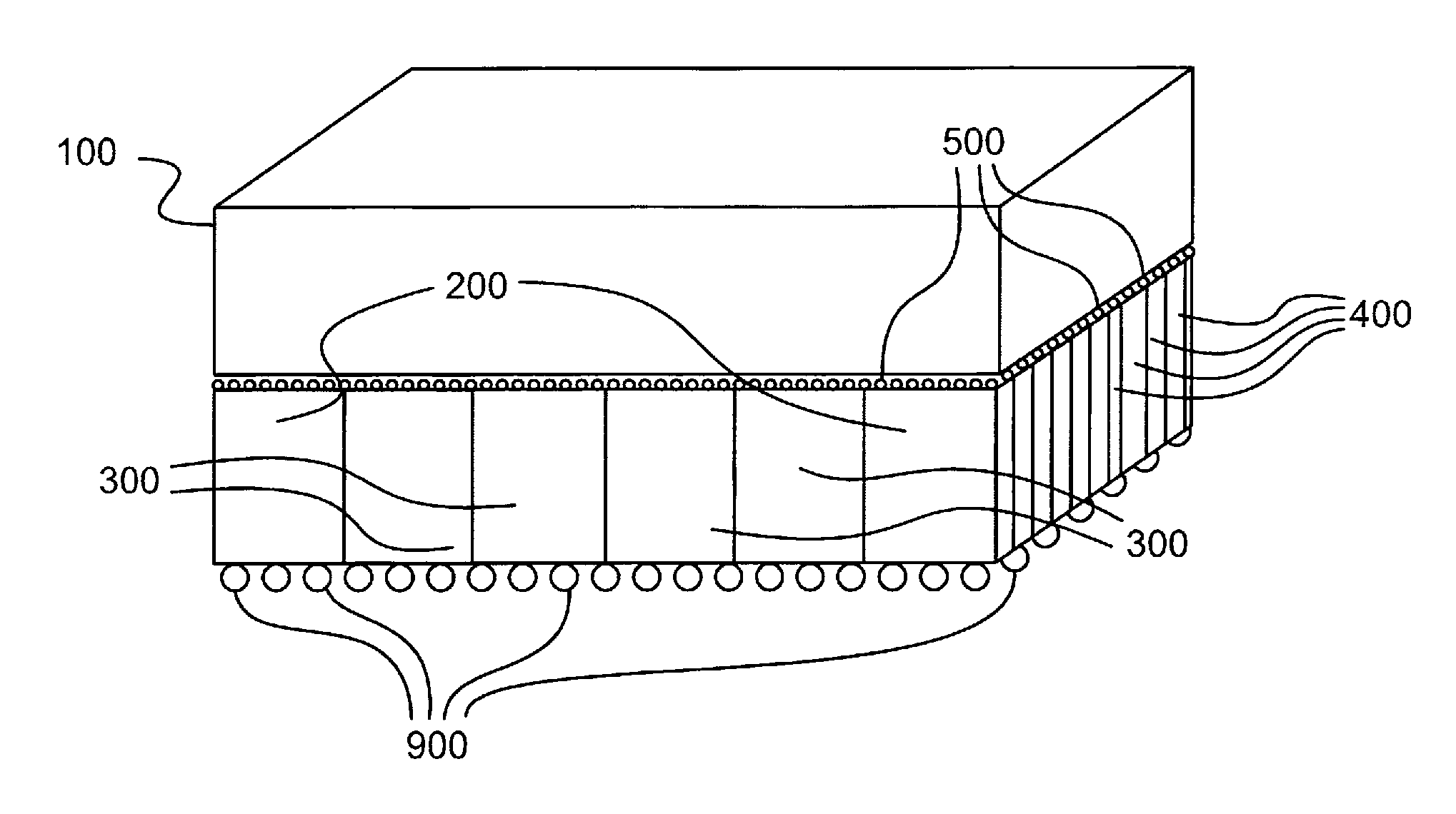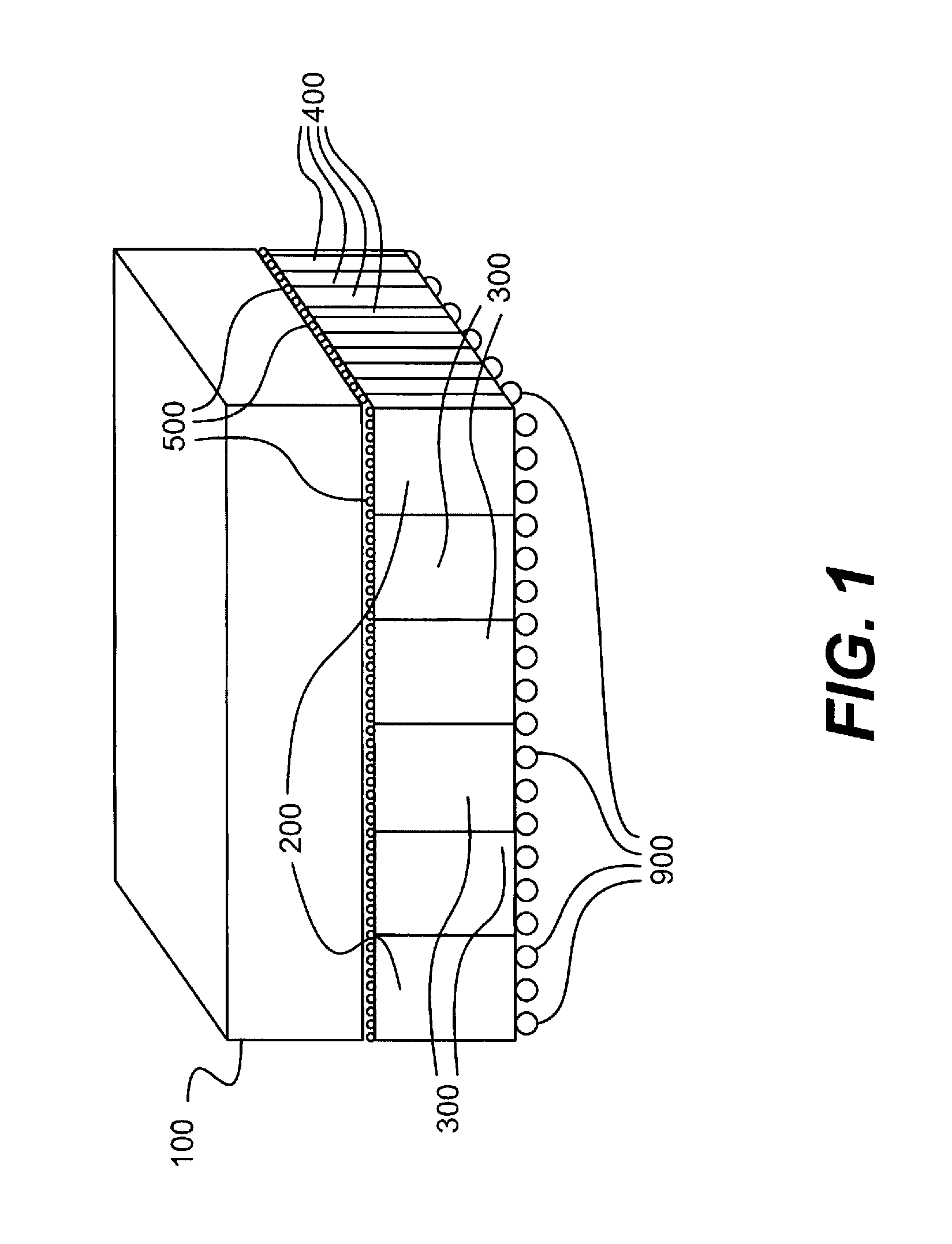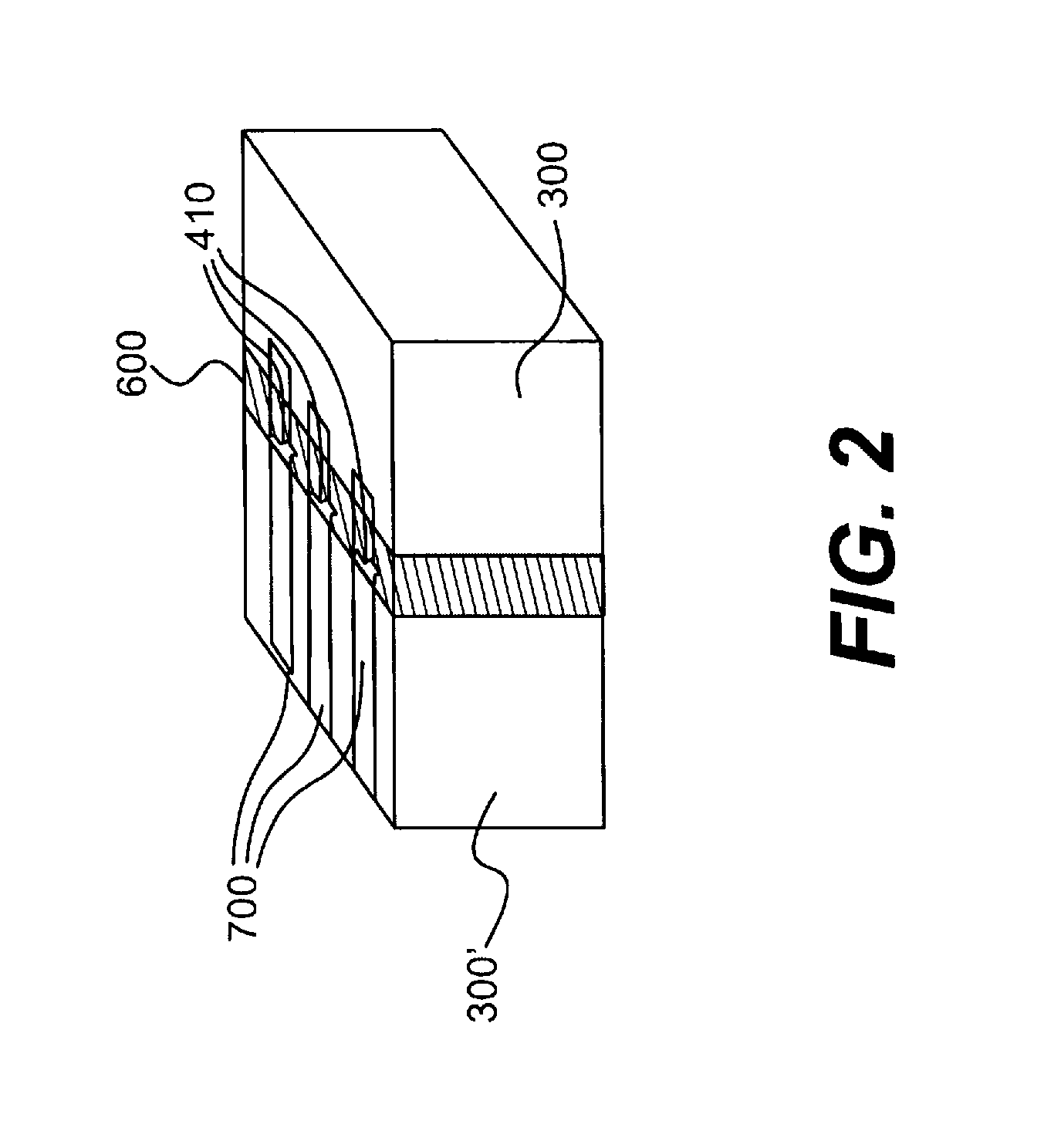Processes for enhanced 3D integration and structures generated using the same
a technology of enhanced electronic 3d and integration, applied in the direction of solid-state devices, basic electric elements, electrical apparatus construction details, etc., can solve the problems of low input/output density, signal delay, and difficulty in powering the system through edge connections, and achieve the effect of enhanced 3d integration
- Summary
- Abstract
- Description
- Claims
- Application Information
AI Technical Summary
Benefits of technology
Problems solved by technology
Method used
Image
Examples
Embodiment Construction
[0032]FIG. 1 shows a schematic isometric view of a 4DI final assembly comprising a logic microprocessor chip 100 attached to a collection of vertically stacked slices 200 and 300 through microjoints 500. Slices 200 and 300 are typically slices from memory wafers but in one later embodiment the end slices 200 are chosen to be slices from an optoelectronic device wafers. The view also shows the metal wiring lines 400 running along the vertical face of one of the end slices 200 and these lines are connected to circuitry present in the slice. Although the lines are shown only on this end slice for clarity, such lines are provided on the active surface of all of the slices 200 and 300. At the bottom of the slice stack an array of C4 solder joints 900 are shown which enable attaching the whole 4DI assembly to a packaging substrate (not shown). Microjoints 500 and C4 solder joints 900 connect to metallization patterns (omitted in FIG. 1 for clarity) located on the top and bottom surfaces o...
PUM
 Login to View More
Login to View More Abstract
Description
Claims
Application Information
 Login to View More
Login to View More - R&D
- Intellectual Property
- Life Sciences
- Materials
- Tech Scout
- Unparalleled Data Quality
- Higher Quality Content
- 60% Fewer Hallucinations
Browse by: Latest US Patents, China's latest patents, Technical Efficacy Thesaurus, Application Domain, Technology Topic, Popular Technical Reports.
© 2025 PatSnap. All rights reserved.Legal|Privacy policy|Modern Slavery Act Transparency Statement|Sitemap|About US| Contact US: help@patsnap.com



